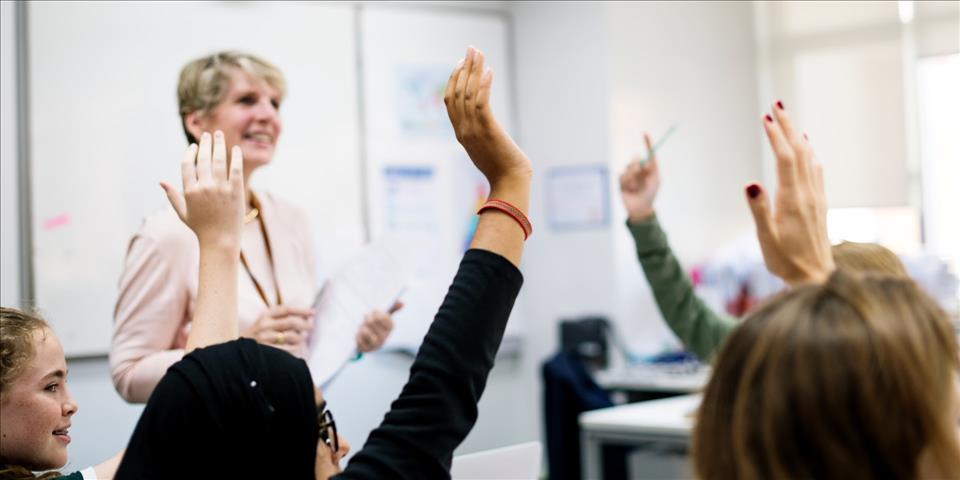
Making RE Part Of The National Curriculum Will Promote Tolerance But Only If It's Taught In The Right Way
The review recommends the creation of a“task and finish group” to devise a religious education curriculum. This would then potentially become part of the national curriculum.
In England, religious education is currently a“basic curriculum subject”. This means it is technically mandatory but not part of the national curriculum. This status has long been considered a source of problems. With no centrally determined curriculum, the quality of RE teaching is patchy. Many schools do not comply with the law in how they offer it.
But overall, the current“multi-faith” approach to RE teaching, enshrined in law in the 1988 Education Act, allows pupils to confront the big questions of life. They can develop an understanding of the diverse beliefs and practices of many different communities represented in Britain.
I am an academic expert who leads the training of teachers in how to deliver religious education. I believe any national curriculum content should embrace as fully as possible the principle of teaching religious education pluralistically. This means not adopting anyone's or any particular understanding of religion as the only approach to learning, or the only approach to determining the curriculum.
Freedom of belief is one of the foundational principles of democracy. It is precisely because, and for, this principle that pluralistic religious education is essential.
Religious education in EnglandWhen state-administered education systems were first universalised in the 19th century, western nations either supported the religious education offered by the prevailing church of a given jurisdiction. There were some exceptions. France and the US, for instance, instigated a secular system with no official religion. To no small degree, though, these systems have been arguably culturally Christian.
The result is a map of religious education that strikingly resembles a map of the Christian reformation. For example, in Germany, students choose between secular ethics, Catholic, or Protestant instruction, or recently in some states, Islamic education.
The teacher is of that designated faith, trained and authorised by that religious authority. In predominantly Catholic countries, such as Poland, the Catholic church has a major stake in determining religious education in the state system.
In England, religious education has evolved differently. The state funds schools of a designated religion which can teach religious education to their own creeds. But most state-funded schools must teach about all the major religions represented in Great Britain.
There is very little data available on the impact of this form of religious education on individuals and society. But it is symbolic at least of a liberal, cosmopolitan and inclusive society that promotes tolerance.

A multi-faith approach to RE lets students confront big questions. Rawpixel/Shutterstock
The educational and social issues arising from teaching religious education in a religiously diverse and secular context have engaged English religious educators for the past 50 years. In response, they have advanced a fascinating array of ideas and methods of teaching about religions. These have drawn inspiration from postmodern philosophy, anthropology and sociology.
The latest iteration of these approaches is the“religion and worldviews” approach, advanced by many religious educators. It is based on the assumption that regardless of whether somebody practices or identifies with a religion, they still live life based on a personal construction of the world. The idea is that this can be studied just like any formalised religious or philosophical system.
On the face of it, the study of worldviews suggests a way to teach religious education pluralistically. It assumes everyone has their own worldview, which is potentially different from another's. However, many people believe there is just one reality and the foundations of morality are more or less obvious.
This is particularly true of most religious believers. They may not see their religion as a human construct, but rather a source of God's revelation to humankind. It is also true of many non-religious people who believe in science as the objective foundation of human knowledge.
Teaching religious education pluralistically is more radical and exciting than setting one or other parameters on each other's beliefs in order to approach them educationally. It has to be open to completely opposing accounts of reality and the possibility of our knowledge of it. This allows for something of much value in education – the development of minds that can hold and weigh up contradictory accounts at once.
However, it can only be achieved by a curriculum that assumes no overarching narrative itself. Instead, it must fairly represent and interrogate the deep differences that actually characterise religious diversity in the real world.

Legal Disclaimer:
MENAFN provides the
information “as is” without warranty of any kind. We do not accept
any responsibility or liability for the accuracy, content, images,
videos, licenses, completeness, legality, or reliability of the information
contained in this article. If you have any complaints or copyright
issues related to this article, kindly contact the provider above.

















Comments
No comment